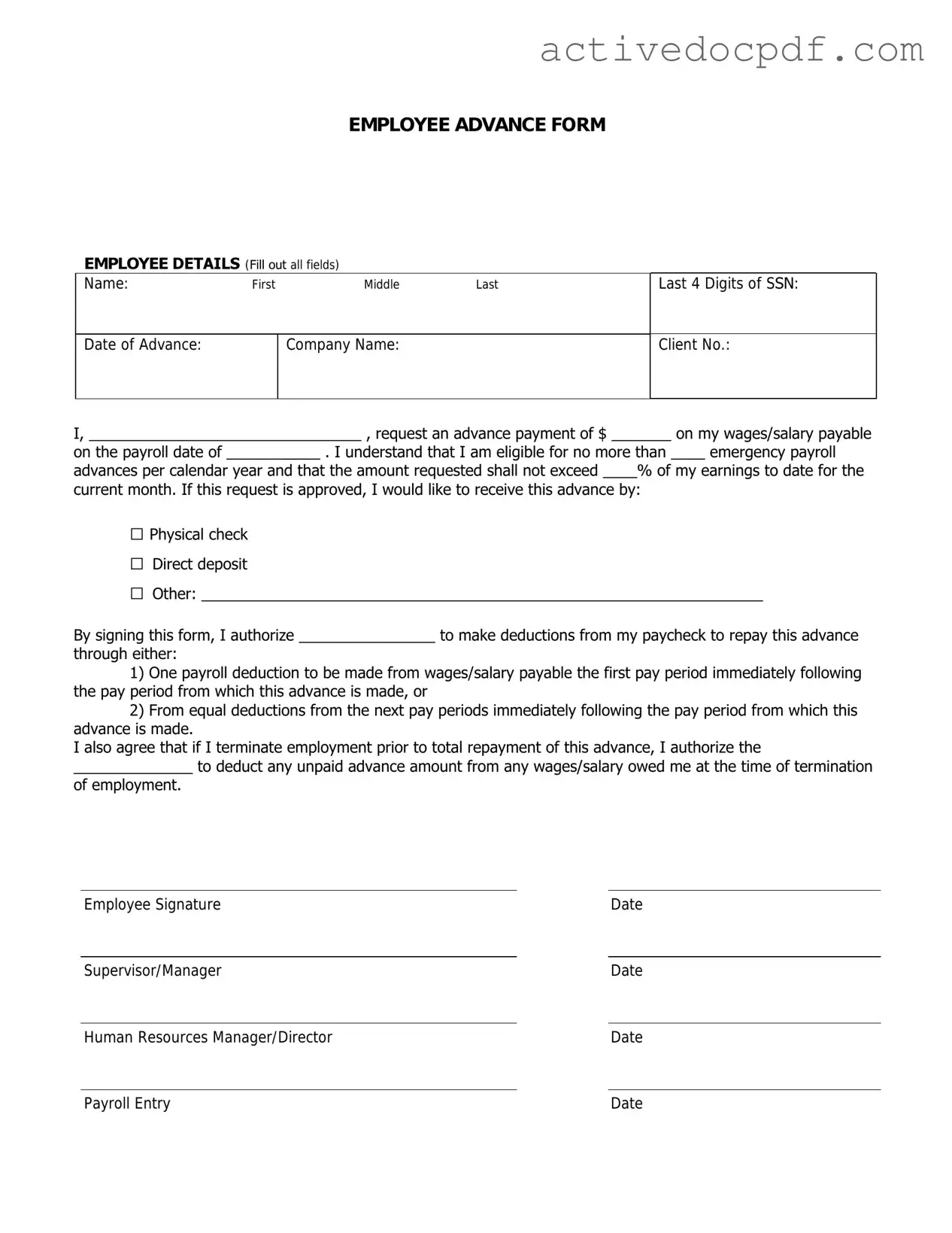The Employee Advance form is a document that allows employees to request an advance on their salary or wages. This can be helpful for individuals facing unexpected expenses or financial emergencies. By submitting this form, employees can outline the amount they wish to receive and provide a reason for the request.
Who is eligible to request an advance?
Generally, all employees who have been with the company for a certain period may be eligible to request an advance. However, eligibility can vary based on company policy. It's essential to check with your human resources department to understand the specific criteria that apply to your situation.
Filling out the Employee Advance form typically involves several steps:
-
Provide your personal information, including your name, employee ID, and department.
-
Clearly state the amount you wish to request.
-
Explain the reason for your advance request in a concise manner.
-
Sign and date the form to confirm your request.
Make sure to review your form for accuracy before submitting it to ensure a smooth processing experience.
How long does it take to process the request?
The processing time for an Employee Advance request can vary. Typically, it may take anywhere from a few days to a week. Factors that influence this timeline include the company's internal review processes and the volume of requests being handled at the time. It’s always a good idea to follow up with your HR department if you haven’t received a response within the expected timeframe.
Will the advance be deducted from my future paychecks?
Yes, in most cases, the amount advanced will be deducted from your future paychecks. The specific terms of repayment should be outlined in the approval notification you receive after your request is processed. Understanding the repayment schedule is crucial, so be sure to clarify any questions with HR.
What happens if my request is denied?
If your request for an advance is denied, you should receive a notification explaining the reasons for the denial. Common reasons may include insufficient tenure with the company or not meeting specific eligibility criteria. If you believe your situation warrants reconsideration, don’t hesitate to discuss it with your supervisor or HR representative.
Can I appeal a denied request?
Yes, many companies allow employees to appeal a denied advance request. The process for appealing typically involves submitting a written explanation of why you believe the advance should be granted. Be sure to include any supporting documentation that could strengthen your case. Check your company’s policy for specific guidelines on the appeals process.
